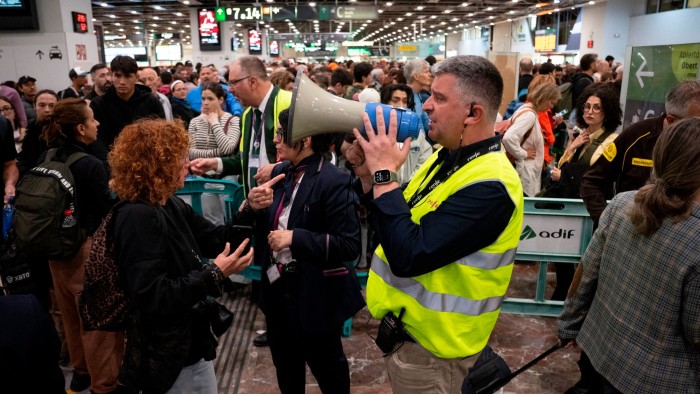Unlock the Editor’s Digest for free
Roula Khalaf, Editor of the FT, selects her favourite stories in this weekly newsletter.
Blackouts are common in parts of the developing world where grids are often inadequate. But, earlier this week, Europe experienced one of its worst ever power outages in Spain and Portugal, stretching from around midday on Monday until Tuesday morning. The episode underscores how advanced economies also cannot afford to be complacent about their electricity resilience.
Power has now been restored to the Iberian peninsula. But the scenes of gridlock and confusion will not be quickly forgotten. Many citizens had never experienced an hours-long blackout. Train networks, traffic lights and mobile connections all went down. Hospitals had to rely on backup generators. Thousands spilled on to the streets as metro stations, shops and offices were closed in Madrid. Spain declared a state of emergency on Monday night. The chaos underscored the utter dependence of modern life on electricity. The demands will only grow as technologies including electric cars, heat pumps and data centres suck up ever more power.
What caused the outage remains unclear. Authorities say Spain lost 60 per cent of its electricity supply in just five seconds on Monday. The frequency on its grid dropped suddenly, triggering power stations to switch off, which then cascaded on to Portugal. Electricity demand and supply must be matched on a second-by-second basis to maintain the stable frequency needed to avoid damage, or outages. The grid operator has so far ruled out a cyber attack. But a better explanation of what went wrong is urgently needed.
Either way, the fact that such a systemic grid outage can occur should be a wake-up call for governments everywhere to bolster network durability. In March, Heathrow, the UK’s biggest airport, had to close following a fire at a nearby electricity substation. It raised questions over how exposed critical infrastructure was to single points of failure.
As nations continue to shift towards renewable energy sources, there is also a greater need to focus on resilience. Traditional coal-fired and gas-fired power stations have large turbines that can help to stabilise a power grid, through inertia, which keeps parts spinning even if the generator has lost power. Wind and solar power plants do not have the same ability, though it is unclear if this contributed to Spain and Portugal’s outage. Blackouts do indeed still occur in systems dominated by gas, coal and nuclear generation, due to technical faults.
How, then, can governments achieve both greener power sources and energy security? Investing in systems that allow power grids built for fossil fuels to absorb renewables is critical. Pumped hydroelectric plants can help to balance grids. Investing in nuclear power and encouraging gas-fired power stations fitted with carbon capture and storage also make sense. Batteries, flywheels and other newer technologies have a role too, while sensors can help operators monitor and mitigate frequency changes.
Networks need upgrading. New transmission lines and grid-scale storage are needed to move and store electricity generated by intermittent renewable sources. But projects are often tied up by lengthy permitting processes. Improving the international interconnectedness of networks could help manage electricity supply and demand over wider geographies.
Some are already trying to pin the blame for Spain and Portugal’s blackout on renewables. Whatever was the trigger, a return to dirty fuels is not the answer. The world is getting hotter, and needs to rely more on renewable energy to provide electricity. But as it does so, it must also ensure its power systems have all the components needed to keep the electrons flowing.


